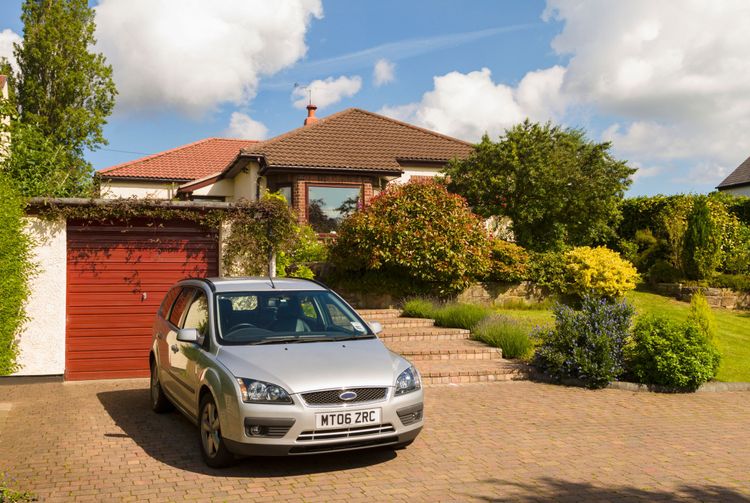A Comprehensive Guide about Revving a Car
Revving the engine, often overlooked, is actually a beneficial practice. It's an interesting way to warm up your car and offers advantages such as increased engine acceleration rate and better oil circulation.
Revving the car engine can be done while in neutral condition, in parking mode, or even while driving. By understanding how to rev a car engine, vehicle owners can make informed decisions while driving.
This blog will cover several aspects of how to properly rev your car’s engine to ensure you are knowledgeable and prepared.
Share this article
Protect Your Ride with the Best Car Insurance Plans
Believe it or Not! Save upto* 75% on TATA AIG Car Insurance
List of Content
- What Does Revving a Car Engine Mean?
- A Guide to Revving the Engine of a Car Properly
- Advantages and Disadvantages of Revving Car Engines
- Importance of Buying Car Insurance Policy
- Conclusion
- FAQS
What Does Revving a Car Engine Mean?
It is the act of accelerating the engine speed without moving the car forward, and as a result, the vehicle produces a loud sound. Revving, meaning to increase the running speed of your car’s engine while stationary, helps warm up your car’s engine. So, revving a car engine increases its acceleration.
This is usually done by pressing the accelerator; the harder you press the accelerator, the greater the engine sound. Generally, drag cars use the revving technique since high RPMs are necessary for faster starting speeds and proper oil circulation.
Revving the engine is also a common practice when the weather is cold. It is used to warm up the car before driving. By revving, you can raise the car temperature and create additional heat to drive a car.
A Guide to Revving the Engine of a Car Properly
Revving a car engine requires some basic knowledge. Here's a step-by-step guide on how to do it properly in parking, neutral, or driving mode.
Revving the Engine While in Parking Mode
Step 1: Turn on the Engine and Wait for 20 to 30 Seconds
The very first step for revving the engine is to turn on the car and wait for some time; it will give time for the engine to warm up. Revving a vehicle without giving time can put additional stress on the engine.
Step 2: Keep the Car on Neutral or Park Mode with E-brakes On
The next step is to keep a car in neutral or park mode, depending on your choice. If the car is on flat ground and won't get rolled backwards and forward, put it in neutral mode.
But if it is in a hill or slope area, it is best to keep it in park mode so it doesn't accidentally move. While putting the car in neutral mode, always keep the e-brake on.
Step 3: Press on the Accelerator to Rev the Engine
After putting the car in neutral or park mode, now is the time to press the accelerator. You will hear a car revving noise when you press the accelerator.
As you apply more force, you will listen to a loud noise, and the tachometer reading will go up. However, it is best to ensure that the tachometer reading does not touch the red line in any way.
Step 4: Release the Accelerator and Return to Idle RPM
Once the car engine revving is done, release the accelerator gently to return to the normal position.
Revving the Engine While Driving
Step 1: Drive the Car Normally
To rev a car engine while driving, you need to go to a less crowded area with zero traffic. Drive a car like you normally do; it is best to keep the speed slow when starting.
Step 2: Press the Clutch While Driving a Manual Car
While driving a manual car, it is important to press the clutch pedal like we do for shifting gear. Keep pressing the clutch the whole time.
Step 3: Shift the Gear to Neutral
Now, after pressing the clutch pedal, it is best to shift the gear to neutral. The car will be coasting at this point, so putting a leg on the accelerator won't make it move or go faster. However, you may hear a loud car revving noise.
Step 4: Keep an Eye on the Tachometer
While revving a car engine, always keep an eye on the tachometer. If the needle gets somewhere in the red line, stop revving the engine right away.
Step 5: Shift to Normal Gear to Start Driving Again
After revving a car engine, press your clutch again to shift back to normal driving gear. Once the gear has been shifted, you can start driving again.
How to Rev an Automatic Car Engine?
Step 1: Start a Car and Wait for 20-30 Seconds
To rev an automatic car, start the engine and wait for some time to get the engine warmed up and circulate oil. The oil will flow through the engine and lubricate the other parts of the car.
Step 2: Shift the Gear to Neutral
The next step is to shift the gear to neutral in automatic cars. While driving a car, turning it to neutral gear won't damage the engine.
Step 3: Press the Accelerator Pedal
After shifting the gear, press the accelerator pedal to rev the engine. The more force you put on the accelerator pedal, the louder the car's revving noise will be. Keep the tachometer between the limit; do not cross the red line.
Step 4: Return to Idle Position
Once the car engine is revved, remove the foot from the accelerator pedal and return to idle position.
Advantages and Disadvantages of Revving Car Engines
Advantages of Revving the Car Engine
Better Oil Circulation: One crucial advantage of revving a car engine is better oil circulation.
When the car engine is revved, the oil pump spins faster, which leads to an increase in flow rate, which further causes an increase in oil pressure. This whole process helps improve the oil circulation of the engine.
Increased Charging Rate: When you rev the car engine, it spins faster, which causes the alternator to spin faster to increase the output. This process helps charge a depleted battery and jumpstart a dead battery.
Diagnosing Concerns: Another advantage of revving the engine is that it helps diagnose car issues and problems. Technicians commonly use this practice during vehicle inspections to check charging system performance, cylinder misfires, etc.
Disadvantages of Revving Car Engines
Noise Pollution: One of the common disadvantages of revving car engines is increased noise pollution. When you rev the car engine, it creates a loud sound that may disturb people around you.
Lower Fuel Economy: Another disadvantage of revving a car engine is lower fuel economy. When you rev a car, it causes the engine to burn more fuel.
Increased Engine Wear: Revving the car engine increases the RPM, which causes engine components to generate more heat. This can lead to faster engine wear and tear.
Importance of Buying Car Insurance Policy
Having a car is one thing, but investing in a car insurance policy to offer financial protection to vehicles is also crucial. Insurance for four-wheelers offers a safety net to vehicle owners against various damages.
There are different kinds of car insurance policies available in the market, such as third-party, own-damage and comprehensive insurance. When choosing a plan, it is best to use a car insurance calculator to compare plans based on coverage and premium.
We offer a unique list of add-ons, such as zero depreciation cover, consumables expense, tyre cover, etc, to enhance protection. Existing policyholders are also offered instant car insurance renewals when done from our website.
Conclusion
Revving your car engine is completely fine if it is done once in a while. It helps lubricate the other parts of the engine and also helps identify the vehicle's performance. However, if it is done regularly or in excessive amounts, it can damage the car engine. Further, the practice can be harmful if you don't know how to rev your car properly.
We’d also recommend not revving your engine in cases of water ingression or in cases where you know the engine has sustained damage, as it can affect the admissibility of your car insurance claims.
FAQS
Do high revs damage an engine?
Revving a car engine excessively can cause substantial damage to a vehicle. It should be done in moderation.
Does revving a car in cold weather help?
Yes, revving a car in cold weather helps in generating heat to warm up the car engine.
Protect Your Ride with the Best Car Insurance Plans
Believe it or Not! Save upto* 75% on TATA AIG Car Insurance
People also search for
Key Insurance term
Share this article
Latest from our blogs

Zero Depreciation Car Insurance Cover
zero depreciation / depreciation reimbursement cover reimbur...
Read More
What is Insured declared value (IDV)?
The term ‘IDV’ refers to the maximum claim your insurer will...
Read More
How is your car insurance premium calculated?
Well it’s about time that changed, don’t you think? Read on ...
Read More